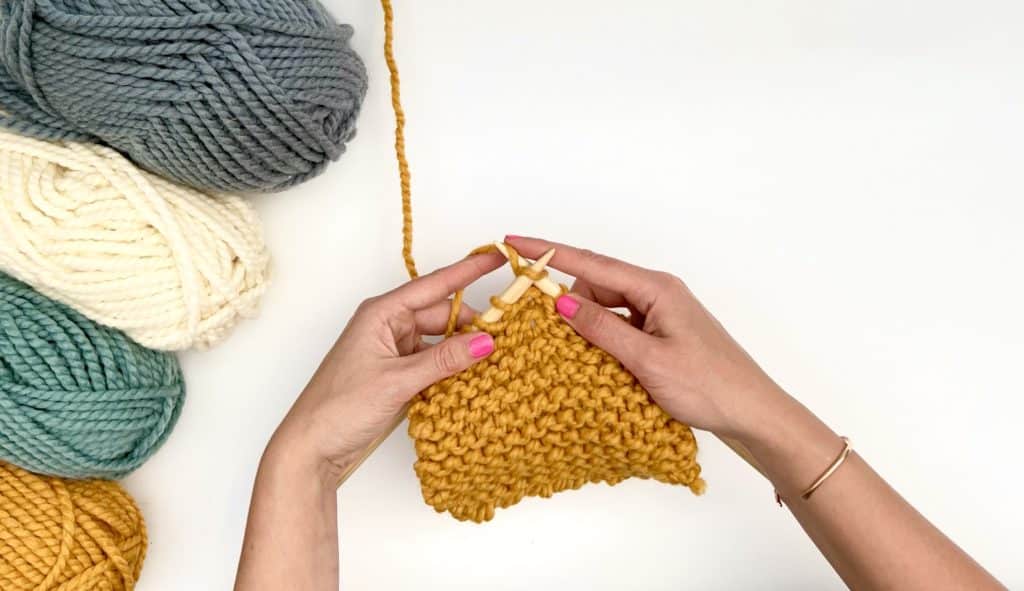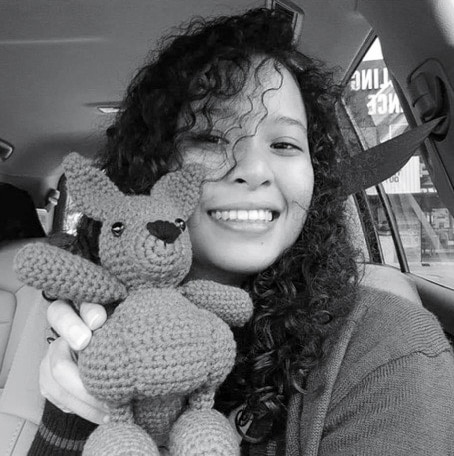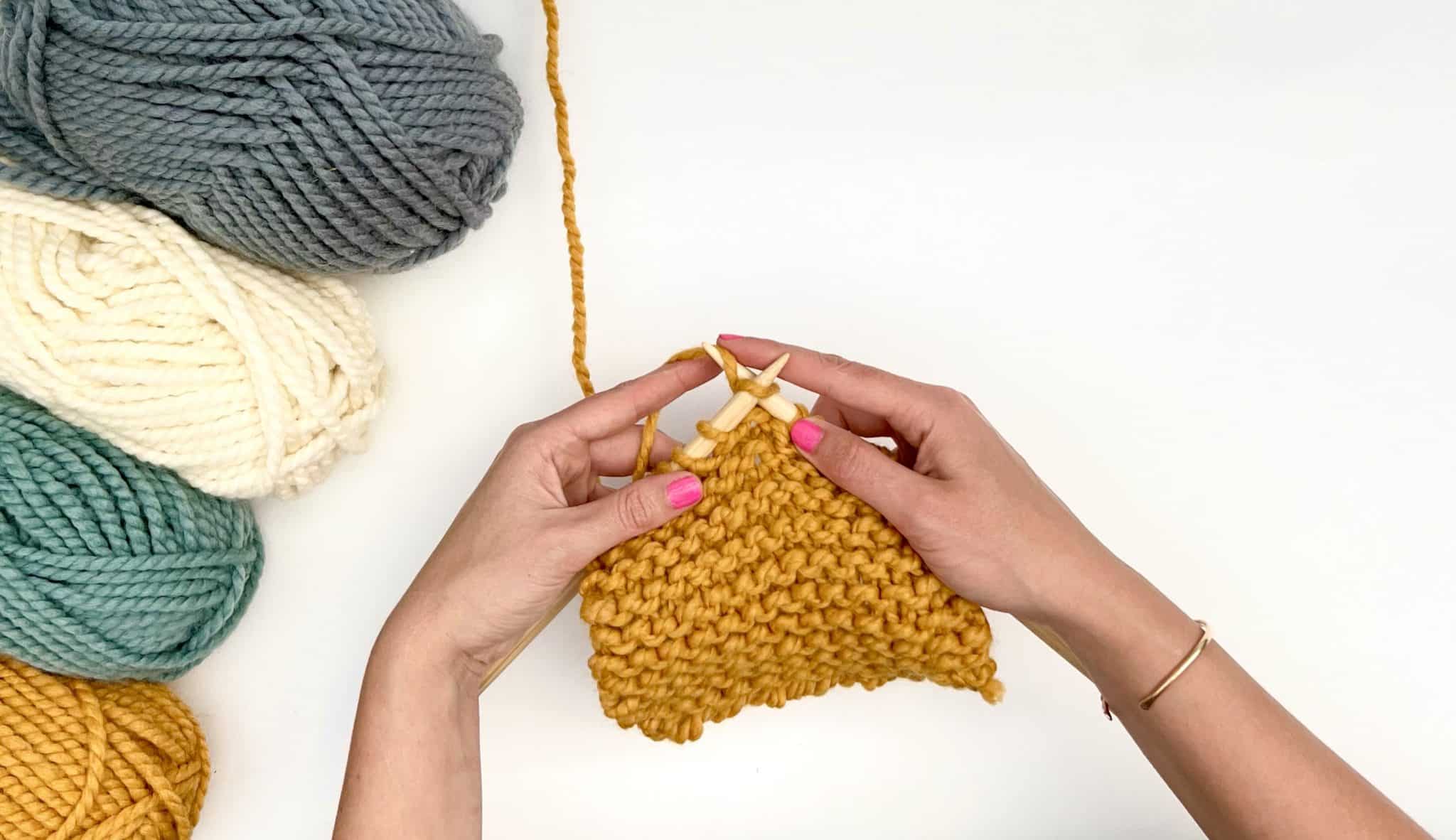So you've decided to dive into the cozy world of knitting—welcome! It might look a little intimidating, but trust us, it's way easier than it seems. Soon you'll be turning a simple string into amazing scarves, beanies, and blankets.
This guide is your friendly first step, packed with the best knitting advice for beginners to get you from "what's a purl?" to "heck yeah, I made this!" We're skipping the confusing jargon and getting straight to the good stuff.
We'll cover everything from choosing the right tools to fixing those inevitable first mistakes. Forget feeling overwhelmed. By the end, you'll have the practical skills and tips to tackle your first project successfully.
1. Start with Basic Stitches: Master Knit and Purl
Before you dream about that chunky sweater you saw on Pinterest, get cozy with the basics. The entire universe of knitting is built on two stitches: the knit stitch and the purl stitch. Seriously, every pattern is just a creative combo of these two moves.
Mastering them is non-negotiable and the most important piece of knitting advice for beginners. The knit stitch creates that classic 'V' shape, while the purl stitch makes a little horizontal bump. Learning to make both consistently is your first big step.
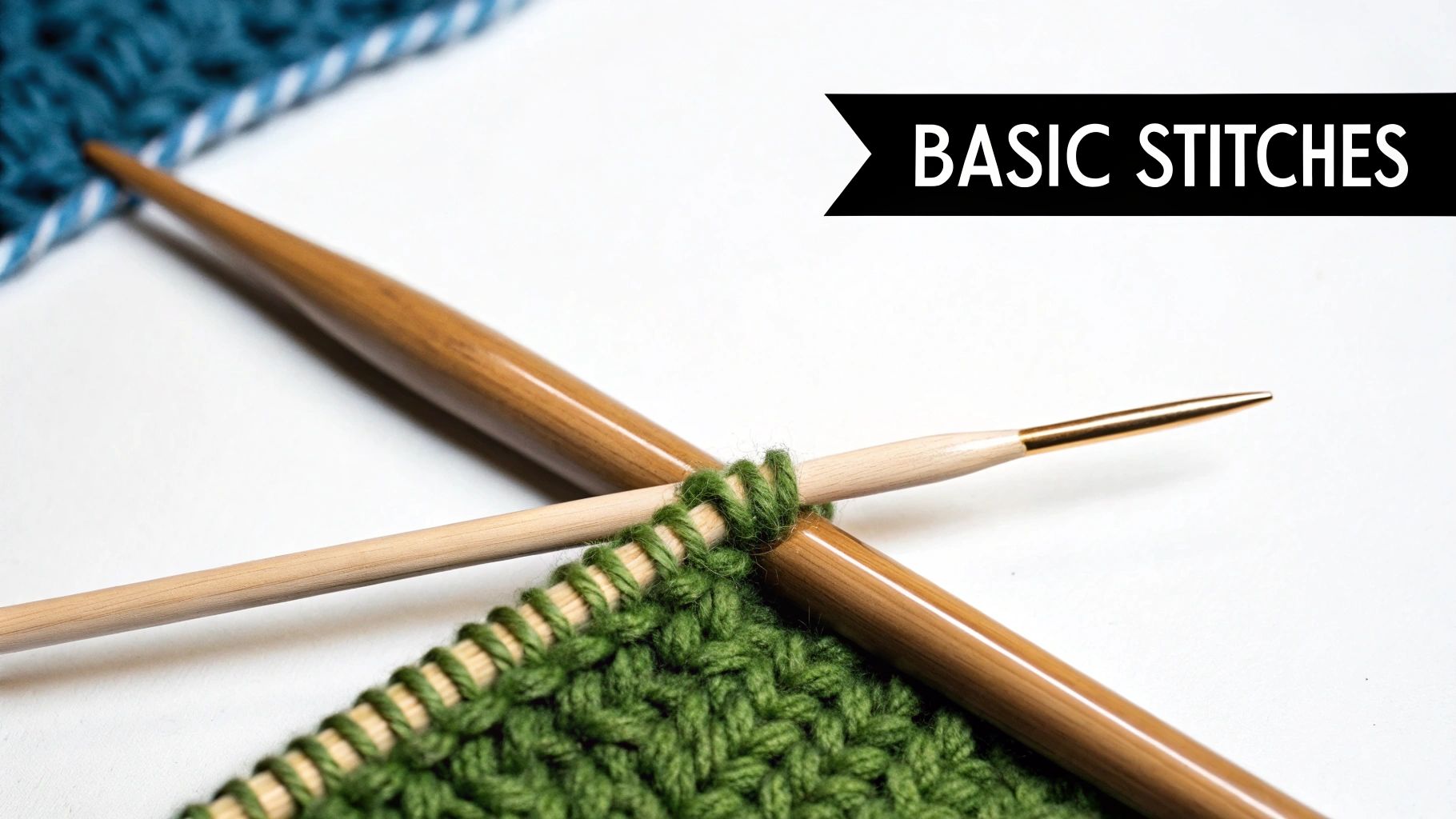
Why It's Your First Step
Think of knit and purl as the alphabet of knitting. Once you know them, you can start forming words (stitch patterns) and then sentences (full projects). Skipping this step is like trying to write a novel without knowing your ABCs.
Key Insight: Consistency is more important than speed. Focus on making each stitch look the same, and the speed will come naturally.
How to Practice Effectively
Don't overwhelm yourself. Just 15-20 minutes of daily practice is way more effective than a frustrating multi-hour session once a week. This helps build muscle memory without burning you out.
- Use the right tools: Grab some medium-weight (worsted) yarn in a light, solid color. Dark or fuzzy yarn makes it hard to see your stitches.
- Count everything: Get in the habit of counting your stitches at the end of every row to catch mistakes early.
- Relax your grip: Keep your yarn tension relaxed but controlled. A death grip will only strain your hands.
Once you feel comfy, try combining them. This is where the magic happens.
- Garter Stitch: Knit every single stitch on every row. Easy-peasy.
- Stockinette Stitch: Alternate one row of knit stitches with one row of purl stitches.
- 1×1 Ribbing: Alternate one knit stitch and one purl stitch in the same row (k1, p1, k1, p1…).
Visual learners, this one's for you. Check out this super clear tutorial from Knitting.com on how to master these essential stitches.
2. Choose Beginner-Friendly Yarn and Needles
Walking into a craft store can feel like a lot with a literal wall of yarn staring back at you. While it's tempting to grab that super-soft or sparkly skein, your choice of materials can make or break your first knitting experience. The right tools make it easier to see and work your stitches.
The best combo is medium-weight yarn (worsted or weight #4) and medium-sized needles (US 7-9 or 4.5mm-5.5mm). This is the sweet spot; the yarn is thick enough to see clearly but not so bulky that it’s hard to handle. This setup makes learning much more enjoyable.

Why It's Your First Step
Using the wrong materials is like trying to learn to drive in a race car—unnecessarily difficult. Slippery yarn, splitty fibers, or dark colors can hide your stitches and make it impossible to spot mistakes. Starting with beginner-friendly tools builds confidence.
Key Insight: Smooth, light-colored, worsted-weight yarn is a beginner's best friend. It provides the best visibility and is forgiving enough to practice with.
How to Practice Effectively
Set yourself up for success right from the yarn aisle. Budget-friendly brands like Lion Brand, Red Heart, and Bernat make excellent starter yarns that are both durable and easy to work with.
- Stick to solids: Choose a yarn in a light, solid color like cream, light blue, or mint green. Variegated or dark yarns make it super hard to see your stitches.
- Feel the fiber: Start with acrylic, cotton, or a smooth wool blend. Avoid fuzzy yarns like mohair until you're more comfortable.
- Needle material matters: Bamboo or wood needles are great for beginners because they have more grip, preventing stitches from sliding off.
For a great visual breakdown, check out this guide from the experts at Knitting.com on choosing your first set of needles.
3. Learn to Read Your Knitting
Once you’ve got your knit and purl stitches down, the next superpower is learning to “read” your work. This means looking at the fabric and understanding what’s going on without constantly checking your pattern. You'll be able to spot mistakes and know exactly where you left off.
Reading your knitting is the skill that separates a beginner from a knitter who truly understands the craft. It’s about recognizing the 'V' of a knit stitch versus the bump of a purl. This skill is a game-changer for fixing mistakes.
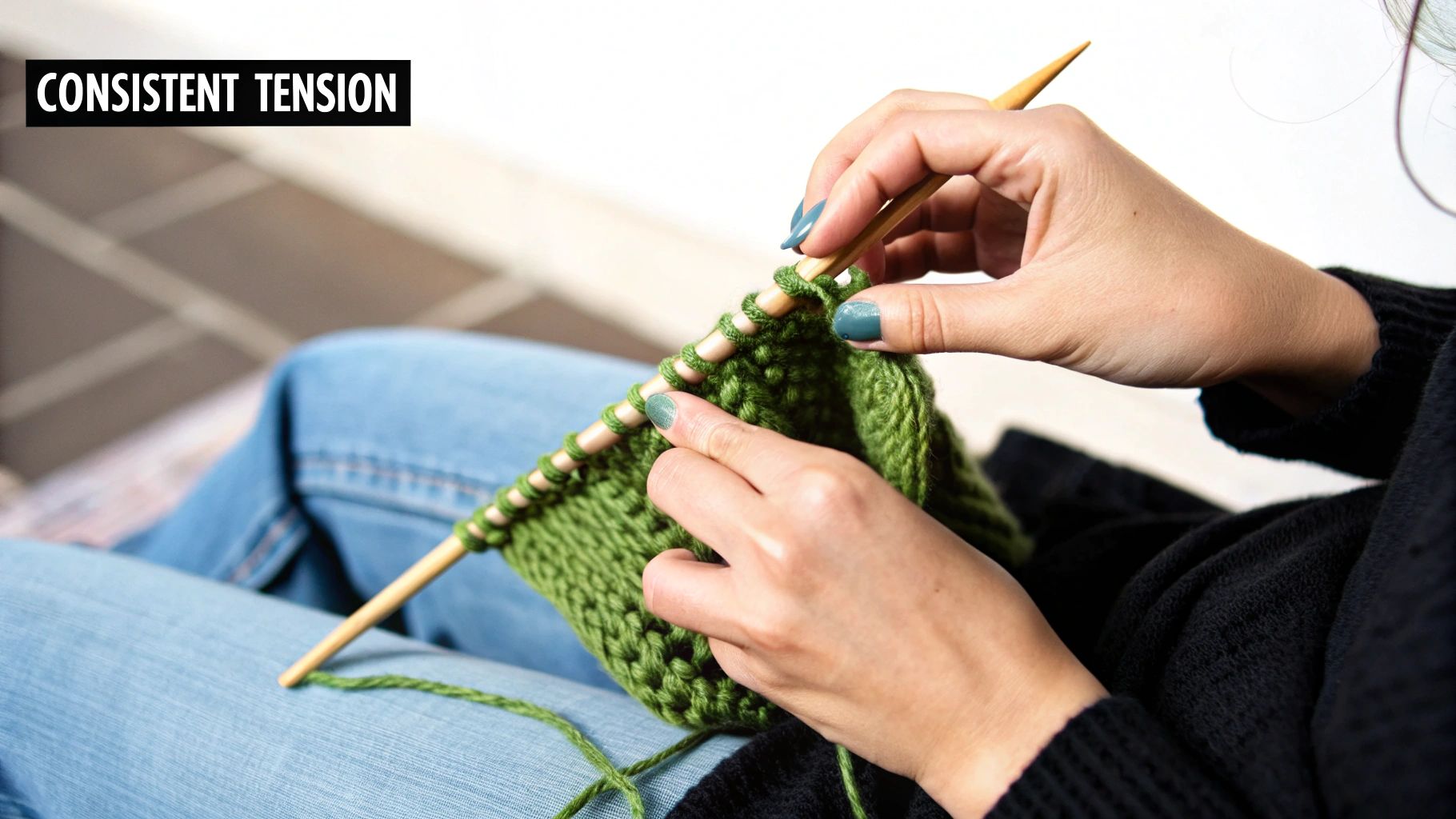
Why It's Your Next Step
Learning to read your knitting is like getting a GPS for your project. You’ll spend less time feeling lost and more time enjoying the process. It's crucial for tackling more complex patterns like lace or cables.
Key Insight: Being able to identify a mistake is the first step to fixing it. When you can see a purl stitch where a knit should be, you can correct it.
How to Practice Effectively
Don't wait to practice this skill on your very first swatches. The more you look at your knitting, the more familiar it will become. It's one of the most useful pieces of knitting advice for beginners.
- Study your stitches: Take a close look at a piece of stockinette fabric to see the 'V's and bumps.
- Use stitch markers: Place markers to break down rows into manageable chunks, making it easier to see where you are.
- Learn "right" and "wrong" sides: Most patterns have a "right side" (RS) and a "wrong side" (WS). Learning to tell them apart is fundamental.
4. Master Consistent Tension
If stitches are the alphabet, then tension is your handwriting. Tension, also called gauge, is how tightly you hold your yarn. It’s the secret sauce that makes your knitting look polished and professional.
Consistent tension is the key to creating smooth, even fabric. It ensures that sweater you’re dreaming of will actually fit. It’s a piece of knitting advice for beginners that separates the newbies from the pros.
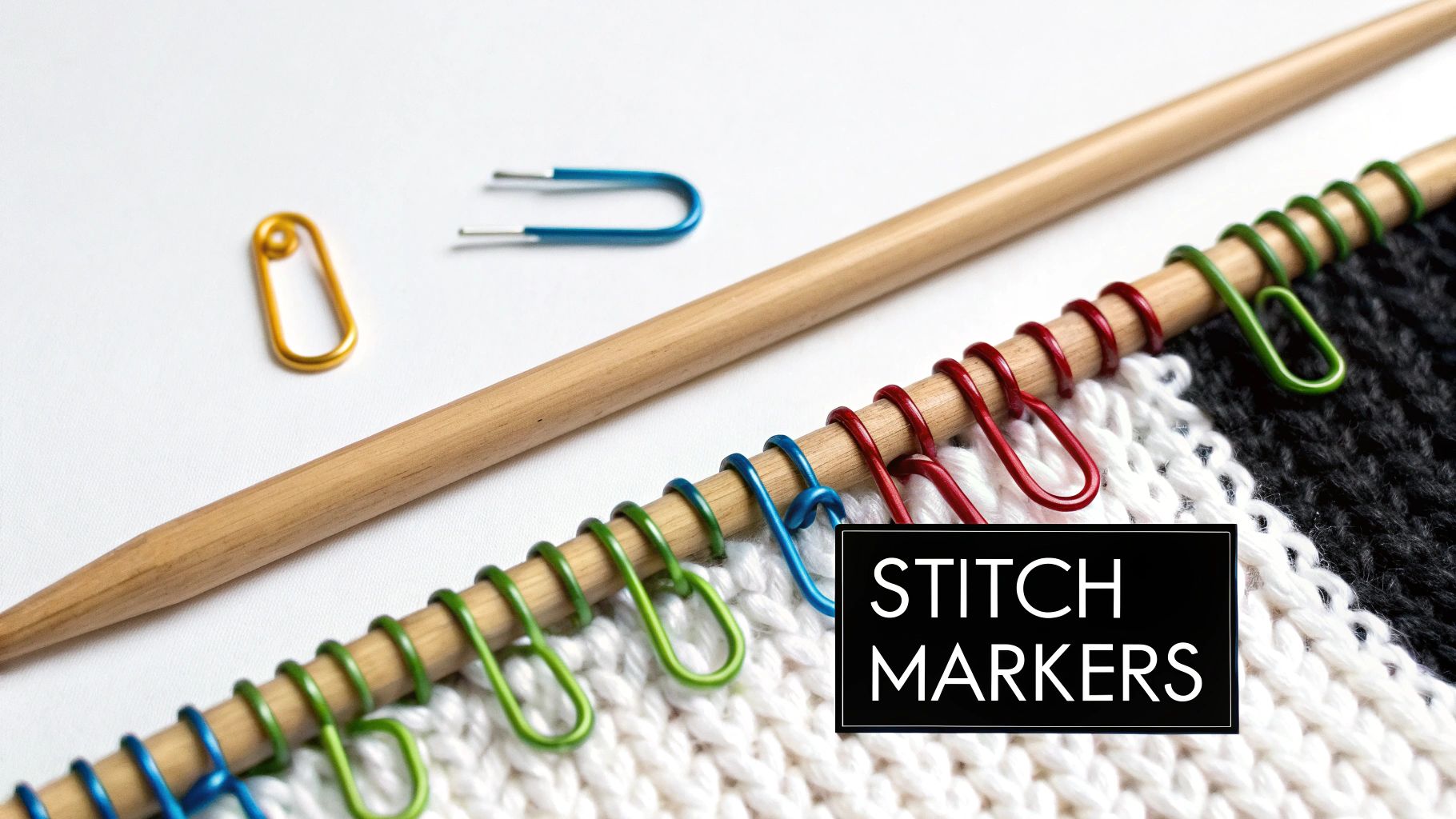
Why It's Your Secret Weapon
Inconsistent tension is a classic beginner struggle. One row might be super tight and the next super loose, resulting in a wavy project. Mastering tension ensures your projects look amazing and fit correctly.
Key Insight: Your tension is unique to you. Don't worry if it's not the same as someone else's; just focus on making it consistent.
How to Practice Effectively
Developing consistent tension is all about muscle memory. It won't happen overnight, but you’ll get into a rhythm that feels natural. Your hands will learn exactly how to hold the yarn and needles.
- Find your hold: Experiment with different ways of wrapping the yarn around your fingers. Find one that feels comfortable and stick with it.
- Don't strangle your needles: A relaxed grip is a happy grip. If your hands are cramping, you’re holding everything too tightly.
- Swatch, swatch, swatch: Always knit a small test square, or "gauge swatch," before starting a project to check your tension.
For a great visual on why gauge is so important, check out this straightforward video from Knitting.com.
5. Use Stitch Markers and Tools Effectively
As you move beyond a simple scarf, patterns get a little more complex. This is where stitch markers become your new best friend. These small rings or clips act like little signposts in your knitting.
Using stitch markers is a game-changing piece of knitting advice for beginners because it takes the mental load off. A marker tells you exactly what to do and when. This simple accessory prevents countless mistakes.
Why It's Your Next Step
Think of stitch markers as GPS for your knitting. They guide you through the twists and turns of a pattern so you don't get lost. A well-placed marker makes the process practically foolproof.
Key Insight: The best knitting tools are the ones you actually use. Don't just collect pretty stitch markers; use them!
How to Practice Effectively
Integrating stitch markers into your workflow is easy. They simply slip from your left needle to your right needle as you come to them. This lets them do the thinking so you can focus on the rhythm.
- Color-code your markers: Use one specific color for the beginning of a round and other colors for pattern repeats.
- Mark key sections: Place a marker before a tricky section to give your brain a heads-up.
- Choose the right type: Locking stitch markers can be clipped onto a specific stitch, not just placed on the needle.
Ready to see how they work in action? This video from Knitting.com shows you the different types and how to use them.
6. Learn to Fix Common Mistakes
Here’s a hard truth: you are going to make mistakes. Every single knitter makes them. The difference is that experienced knitters know how to fix them without panicking.
Learning to spot and correct common errors is one of the most crucial pieces of knitting advice for beginners. It means you won't have to "frog" (rip out) your entire project over a single dropped stitch. You'll see mistakes as small puzzles to solve.
Why It's a Game-Changer
Mistakes are not failures; they are learning opportunities. Understanding how to fix an error gives you the freedom to try more complex patterns without fear. It's the skill that separates those who finish projects from those who don't.
Key Insight: Your goal isn't to never make mistakes. It's to get so good at fixing them that they no longer intimidate you.
How to Practice Effectively
The best time to learn how to fix mistakes is before you're deep in a project you love. Practice on your swatches. Intentionally drop stitches so you can learn to correct them in a low-stakes environment.
- Keep a crochet hook handy: This is the #1 tool for picking up dropped stitches.
- Learn to "tink": "Tink" is "knit" spelled backward, and it means to un-knit stitches one by one.
- Use lifelines: Run scrap yarn through your stitches before a tricky section. If you mess up, you can unravel back to the lifeline without losing all your work.
Check out this fantastic tutorial that walks you through fixing some of the most common beginner knitting mistakes.
7. Start with Simple, Achievable Projects
That intricate cable-knit sweater might be your end goal, but it's a fast track to frustration as a first project. The best knitting advice for beginners is to build confidence with simple projects first. Starting small lets you practice the fundamentals and get that amazing feeling of accomplishment.
Simple projects like dishcloths, scarves, or basic hats are perfect. They let you focus on your knit and purl stitches and keeping even tension. These quick wins give you a tangible item and the motivation to keep learning.
Why It's Your First Step
Think of your first project as your training ground. It's where you put your basic skills to the test in a low-stakes environment. You'll build crucial muscle memory while creating something practical.
Key Insight: Finishing a simple project, no matter how small, is a huge confidence booster. It proves you can knit.
How to Practice Effectively
Choose projects that let you master one or two skills at a time. This allows for progressive learning without the overwhelm. The goal is to enjoy the process and build a solid foundation.
- Focus on the basics: A simple garter stitch scarf is a fantastic first project.
- Introduce new skills slowly: Once you're comfortable, try a basic ribbed hat to learn knitting in the round.
- Don't rush the process: There's no race to get to advanced patterns. Enjoy being a beginner.
Ready to cast on a project you can actually finish? Check out this great tutorial from Knitting.com for a super simple beginner scarf.
7-Key Knitting Tips Comparison Guide
| Item | 🔄 Implementation Complexity | 💡 Resource Requirements | 📊 Expected Outcomes | 💡 Ideal Use Cases | ⭐ Key Advantages |
|---|---|---|---|---|---|
| Start with Basic Stitches: Master Knit and Purl | Low to Moderate – learn basic stitches | Minimal – yarn, needles | Solid foundation in knitting, versatile fabric textures | Beginners starting knitting projects | Foundation for all advanced techniques; builds muscle memory |
| Choose Beginner-Friendly Yarn and Needles | Low – select recommended materials | Moderate – medium-weight yarn, proper needles | Easier learning process, comfortable knitting | Beginners needing optimal materials | Visibility of stitches; forgiving yarn; reduces frustration |
| Learn to Read Your Knitting | Moderate – requires pattern recognition | Minimal – good lighting, patience | Improved error detection, confidence in knitting | Intermediate beginners aiming to self-check work | Reduces dependence on instructions; enables improvisation |
| Master Consistent Tension | High – requires ongoing practice | Minimal – gauge tools, consistent yarn | Even fabric, proper fit, professional look | Intermediate knitters focused on quality | Ensures uniform projects; prevents puckering/stretching |
| Use Stitch Markers and Tools Effectively | Low – simple to integrate tools | Low to Moderate – purchase markers, tools | Fewer mistakes, easier tracking of complex patterns | Beginners and intermediate working on complex patterns | Saves time; makes complex patterns manageable |
| Learn to Fix Common Mistakes | Moderate – skill develops with practice | Minimal – crochet hook, lifeline, good light | Saves project time and materials, confidence boost | All skill levels to avoid frustration | Builds problem-solving skills; reduces project abandonment |
| Start with Simple, Achievable Projects | Low – beginner-friendly project complexity | Minimal – basic yarn and tools | Quick gratification, skill-building progression | Absolute beginners building confidence | Builds confidence; allows focused practice; less intimidating |
Your Knitting Journey Is Just Beginning
And that's a wrap on our essential knitting advice for beginners! You’ve taken a huge step from being knitting-curious to a knitter-in-training. This guide was designed to be your launchpad, giving you the confidence to cast on.
Think of these tips as your personal knitting toolkit. You know how to start strong by mastering the knit and purl stitches and choosing the right beginner-friendly yarn and needles. These initial choices make a massive difference.
From Beginner to Confident Knitter
The real magic happens when you learn to read your knitting. Understanding what those V's and bumps mean transforms you into an active creator. You can spot a mistake before it becomes a disaster.
Speaking of mistakes, remember that they are just part of the process. Learning how to fix common errors is a level-up moment. It builds the skills that will serve you for years to come.
Key Takeaway: Patience is your most important tool. Every expert was once a beginner. Embrace the learning curve and celebrate your progress.
Your Next Creative Steps
The most crucial piece of knitting advice for beginners is to just start. Don't wait for the "perfect" moment. Pick one of those simple, achievable projects and dive in.
Your first project is about the experience—the calming motion and the joy of seeing fabric appear from yarn. This journey is yours to shape, one stitch at a time. So grab your needles and get ready to create something wonderful.
Ready to put this advice into action? Knitting.com is your ultimate resource, packed with free patterns, video tutorials, and all the supplies you need. Explore our beginner-friendly kits and patterns today at Knitting.com and start your creative journey.
